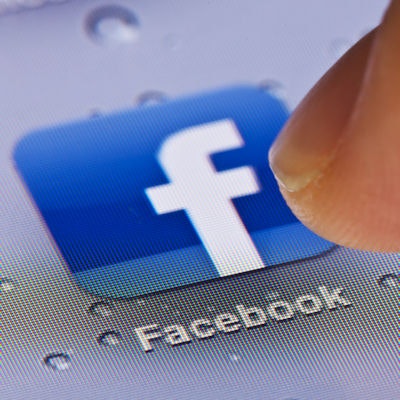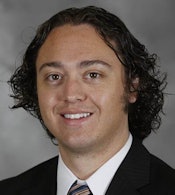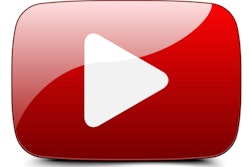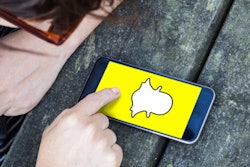
Are radiologists making the best use of social media -- especially as an educational tool? Perhaps not, according to a study published online October 19 in Academic Radiology.
More than half of U.S. adults now use social media -- everything from Facebook to YouTube to Instagram -- and its increasing influence has transferred to the medical field. More hospitals and private medical practices are establishing a social media presence as a way to increase their visibility in the community, promote research and academic endeavors, connect physicians within departments, and foster relationships between physicians and patients, wrote a team led by Dr. Nicholas Koontz of Indiana University.
 Dr. Nicholas Koontz of Indiana University.
Dr. Nicholas Koontz of Indiana University.Along with other medical specialties, radiology has also begun to use social media for these purposes. But the specialty may be lagging in harnessing these powerful tools for radiology education -- which is surprising, given how well teaching lends itself to social media platforms, Koontz told AuntMinnie.com.
"Social media ought to be a perfect fit for radiology education, as it allows the bundling of tidy, easily digestible packets of knowledge into an image-rich medium that can be widely disseminated and archived in perpetuity," he said. "And while it's ubiquitous in modern life, it seems to be underutilized for radiology education."
Underutilized?
Koontz and colleagues wanted to investigate the use of social media for education, as well as whether there are differences between generations of radiologists and between radiology faculty, residents, and fellows in how they use social media. They hoped to use their findings as part of an effort to create a social media-based educational learning initiative for radiologists.
The researchers sent a 10-question survey to 172 radiologists in their department, receiving 112 responses for a completion rate of 65%. Of the 112 participants, 51% were faculty and 49% were trainees (residents and fellows).
Of the survey respondents, 85% reported using social media, the majority (81%) for 30 minutes or less per day. Thirty-five percent of the study participants reported having used social media for educational activities, and 66% expressed willingness to use social media for this purpose.
The following were the most common applications used:
- Facebook: 67%
- YouTube: 57%
- Instagram: 26%
- Twitter: 21%
- WhatsApp: 19%
- Snapchat: 12%
Koontz and colleagues found that 88% of study participants endorsed the idea of an electronic, case-based radiology curriculum that could be delivered via social media for training and education, although a similar percentage (83%) were in favor of spending 10 minutes or less per day taking part in such a curriculum, the group noted.
Regarding how such an electronic curriculum could be distributed, 68% of survey respondents favored email, followed by social media (11%), proprietary radiology communication software (11%), and an internal server (4%).
Respondents suggested that the most useful features of an electronic, case-based radiology education curriculum would be an unknown case review (78%), PowerPoint slides (75%), and recorded online lectures (41%).
The study results were stratified by generation: Baby boomers (those 50 and older) were less likely than Generation X and millennials (those younger than 50) to use social media. For example, 29% of baby boomers use Facebook, compared with 74% of Generation X and millennial radiologists.
The results were also stratified by career level, with 25% of attending radiologists stating that they do not use social media, compared with 9% of trainees. Trainees were more likely than attending radiologists to find an electronic curriculum valuable, at 95% versus 82% (p = 0.0458). Attending radiologists were also less willing to spend time engaging in an electronic curriculum, with 60% stating they would spend fewer than five minutes per day; in comparison, 53% of radiology trainees said they would be willing to spend up to 10 minutes per day. Trainees were also more likely than faculty to use Facebook (72% versus 60%).
"Although it was not surprising that younger radiologists spend more time using social media -- they've grown up in a world where the internet and mobile devices are ever-present -- it did surprise us that there was such a high level of interest across all survey participants for using it for radiology education," Koontz said. "That two-thirds of surveyed radiologists are interested in social media for learning purposes demonstrates just how important it is for educators to use it as part of their teaching strategy."
Mind the gap
Different generations of learners tend to manifest the educational styles of their eras, according to Koontz. But this isn't an insurmountable obstacle.
"Our data show that there is an undeniable generation gap with regards to certain aspects of social media use among radiologists," he said. "But I don't think radiology educators should be overly concerned with 'closing the gap' by increasing the social media engagement of senior colleagues. Rather, our study suggests that educators must explore and embrace this technology for the purposes of improving the quality of educational content for our trainees, many of whom have prior experience using social media for learning purposes prior to medical school, residency, or fellowship."
In addition to the generational gap, social media has some other pitfalls that must be considered, Koontz's group noted. Data breaches are a real concern, as is the lack of a process for peer review of teaching content and learners' responses to this content -- which can lead to harassment or discrimination and the sharing or reuse of content without permission.
"The need to protect patients' privacy is paramount," Koontz told AuntMinnie.com. "Educators must remain cognizant that even anonymous cases can be in violation of protected health information [PHI], particularly if they contain topical clinical information that could be used to identify the patient. And it's also important for radiology educators to be clear on social media that they are not dispensing medical advice, but rather highlighting salient teaching points for the intended purpose of radiology education."
Pitfalls or not, the reality is that social media is here to stay, the researchers concluded.
"Social media is a common feature of modern life and has shown an increased reach into the medical community," they wrote. "[It features] many attributes that make it an attractive tool for radiology education."



















